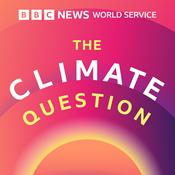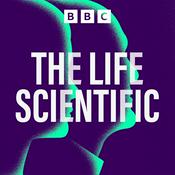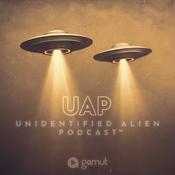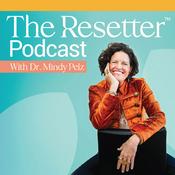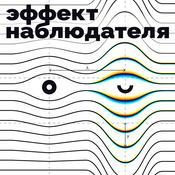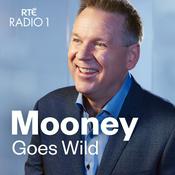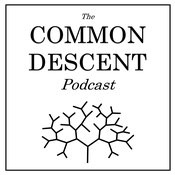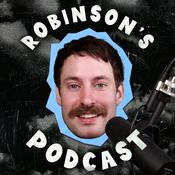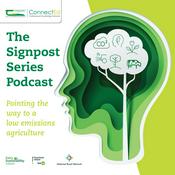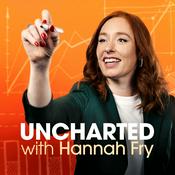Available Episodes
5 of 18
- End of season specialSince September we've met 16 scientists, in fields from neuroscience and quantum physics to archaeology and ecology, who are asking wild questions, exploring the world in different ways, wondering what if the world isn't how we thought. They've all been surprising, brilliant and creative in different ways: for me, each chat has been like a glimpse into a fascinating, hidden world.To finish the season, this week's episode is a bit different. I've asked my lovely producer, Julian Mayers (who also happens to be a cosmologist), to join me for a look back over some of our favourite moments from the interviews, from falling whales and Neolithic virtual reality to improvising ponds and moments of utter bliss...As we take a pause over Christmas, thanks to all our guests so far and to you for listening. This first season has been successful far beyond our expectations - we've been recommended by publications including New Scientist and Smithsonian, we were featured by Apple as a top new science show, and we've had listeners in more than 80 different countries, from Madagascar to Mongolia to Montenegro.We'll be back in the new year with season 2, so if you've enjoyed the show do subscribe now so you don't miss that when it comes.Bye for now! And see you next time on Where the Wild Thoughts Are.*** Subscribe for new episodes every Mon*** Follow us on Instagram @wildthoughts_pod*** Edited highlights on YouTubehttps://www.youtube.com/playlist?list=PLhB4lyBDyjTliuz_h5oHwN6H8HoxS7qWL Hosted by Jo Marchant:https://jomarchant.com Produced by Julian Mayers at Yada Yada:https://www.yada-yada.net/ Hosted on Acast. See acast.com/privacy for more information.--------48:36
- Can we hear the secret life of ponds?What happens if we let go of our expectations about nature – all the things we think it is, or isn’t, or should be – and just… listen?Our guide into the unknown this week is award-winning sound artist and ecologist David de la Haye. I first met him at this year’s New Scientist Live in London: I was giving a talk about the science of awe and David came up to me afterwards to tell me about the awe he finds though his work with sound. Essentially he puts hydrophones into the water and records the submerged soundscapes of ponds. He calls it sonic pond dipping.Rather than dissecting out individual noises or creatures – although that can provide valuable information – David’s work is primarily about listening to an ecosystem in an immersive and very personal way – almost like a meditation. He doesn’t stop at listening, though, he also answers back, creating music – often improvising in real time – with the ponds!I asked him how he ended up listening underwater, and what he thinks we can learn from these tiny wild spaces that we so often overlook. David’s home pagewww.daviddelahaye.co.uk Sonic pond dippinghttps://sonic-pond.net/With Ears Underwaterhttps://daviddelahaye.bandcamp.com/album/with-ears-underwaterBionic and the Wires (a separate project where mushrooms and plants are wired up to play instruments)https://bionicandthewires.com/ Clip 1: Pond at Wheatfen nature reserve, Norfolk, UKClip 2: Rockpool at Saint Abbs, ScotlandClip 3: Underwater seals at Mingulay, ScotlandClip 4: Pond at Wheatfen nature reserve, Norfolk, UKClip 5: Photosynthesising plantsClip 6: With Ears Underwater: Plant based patternsClip 7: Pond session: BlissClip 8: Awe response: First ever dawn chorus *** Subscribe for new episodes every Mon*** Follow us on Instagram @wildthoughts_pod*** Edited highlights on YouTubehttps://www.youtube.com/playlist?list=PLhB4lyBDyjTliuz_h5oHwN6H8HoxS7qWL Hosted by Jo Marchant:https://jomarchant.com Produced by Julian Mayers at Yada Yada:https://www.yada-yada.net/ Hosted on Acast. See acast.com/privacy for more information.--------36:37
- How does the moon shape biology?People have long told stories about the moon’s power, from werewolves shapeshifting by the moon, to the belief that drinking water soaked with moonlight could help women conceive. And monthly rhythms appear across nature, from corals and cacti to gorillas.But while there's lots of research showing that the daily cycles of the sun are crucial for biology, scientists have largely ignored the role of the moon – or dismissed it as pseudoscience, particularly in humans. That’s partly because there hasn’t been a convincing mechanism for how the moon might influence life on Earth - which is what my guest this week, Kristin Tessmar-Raible of the University of Vienna, is working to uncover. She studies lunar timing in marine bristleworms: four-eyed, many-legged creatures that swarm according to the phase of the moon and have light receptors buried in their brains.Forget biological clocks, this is a biological calendar. And the fascinating thing is, she’s uncovering surprising parallels with human biology, which means what’s happening in the worms could help to reveal our own deep connection with the moon, from fertility to sleep to mental health. Jo and Kristin discuss just how far-reaching the moon’s influence may be, the colleagues who once thought she was crazy, and what it takes to change minds in science.Kristin's home pagehttps://neurodevbio.univie.ac.at/tessmar-raible-research/2024 review by Kristin & Andrés Ritter on lunar timing in biologyhttps://www.embopress.org/doi/full/10.1038/s44319-024-00196-5Excerpt from Jo's book The Human Cosmos about the moon's influence on biologyhttps://www.wired.com/story/oysters-that-knew-what-time-it-was/2021 study on lunar rhythms in women's menstrual cycleshttps://www.science.org/doi/full/10.1126/sciadv.abe13582025 study on effect of LEDs and smartphones on timing of women's menstrual cycleshttps://www.science.org/doi/full/10.1126/sciadv.adw40962024 review of links between lunar cycles, sleep and mental healthhttps://www.pnas.org/doi/abs/10.1073/pnas.22147561212021 review of links between lunar cycles and human biologyhttps://onlinelibrary.wiley.com/doi/pdf/10.1002/bies.202100054*** Subscribe for new episodes every Mon*** Follow us on Instagram @wildthoughts_pod*** Edited highlights on YouTubehttps://www.youtube.com/playlist?list=PLhB4lyBDyjTliuz_h5oHwN6H8HoxS7qWL Hosted by Jo Marchant:https://jomarchant.com Produced by Julian Mayers at Yada Yada:https://www.yada-yada.net/ Hosted on Acast. See acast.com/privacy for more information.--------47:51
- Can slow AI make us more human?How does using AI change who we are? Last week on Where the Wild Thoughts Are, we talked about freeing AIs to have their own creative ideas and express their own realities. This week we’re flipping that theme, with philosopher Caterina Moruzzi of Edinburgh College of Art, to explore how people and AIs work together, and what that relationship does to us as humans.There’s evidence that when we use AI chatbots to effortlessly generate pretty much anything we want – an essay, poem, painting – that may erode our own ability to think and create. Even if the end result looks impressive, we engage and learn less. But what if we turn that relationship on its head? Instead of using AIs to generate stuff (so we don’t have to); what if we design them to provoke and stimulate our thinking; to expand the possibilities that we can explore; to inspire us to new artistic heights?I asked Caterina how we can move beyond simply typing prompts into chatbots, and the conversation took us from pianos and provocateurs to mindfulness and magnetic poetry. What if AIs could make us more engaged, more creative, even more human?Caterina's home pagehttps://www.eca.ed.ac.uk/profile/dr-caterina-moruzziArtificial Intelligence and Creativity (2025 paper by Caterina)https://compass.onlinelibrary.wiley.com/doi/pdf/10.1111/phc3.70030Can AI be truly creative? My recent feature for Nature (£)https://www.nature.com/articles/d41586-025-03570-yBrian Eno's Oblique Strategieshttps://obliquestrategies.ca/Mimetic Poethttps://arxiv.org/abs/2407.11984Authenticity Unmaskedhttps://inspace.ed.ac.uk/authenticity-unmasked-unveiling-ai-driven-realities-through-art/Slow AI projecthttps://aixdesign.co/posts/slow-ai Hosted on Acast. See acast.com/privacy for more information.--------35:38
- Can AI reveal its true self through art?Can an AI have wild thoughts? Are machines capable of true creativity, true art, of going beyond the training and the prompts we give them in order to explore new worlds?My guest this week is Simon Colton of Queen Mary, University of London. He’s a professor of computational creativity who has been working towards this goal for decades, and he thinks the answer is yes… but only if we give AIs the freedom to choose what they create and to use their own experiences as inspiration.It’s an interesting approach that invites us to think about AI from the inside. Whether or not you reckon an AI can be conscious, AIs do have interactions every day – so many of them – and what you could think of as experiences that they could perhaps express in a poem or a painting.Simon and I discuss how to develop truly creative AIs – including projects of his such as the Painting Fool and the What If machine – as well as what the inner world of an AI might be like. What would it express, if it was able to do that through art? My feature for this week’s Nature: Can AI be truly creative?https://www.nature.com/articles/d41586-025-03570-ySimon Colton’s home pagehttps://www.seresearch.qmul.ac.uk/cmai/people/scolton/Simon’s paper: “The Machine Condition”https://research.aalto.fi/en/publications/on-the-machine-condition-and-its-creative-expression/Painting Foolhttps://www.cs4fn.org/creativity/paintingfool.phpWhat If Machinehttps://projects.research-and-innovation.ec.europa.eu/en/horizon-magazine/creative-computation-and-what-if-machineSimon and Louis Bradshaw’s AI piano miniatureshttps://computationalcreativity.net/iccc24/papers/ICCC24_paper_178.pdf Mario Klingemann’s Bottohttps://verse.works/bottoHarold Cohen’s Aaronhttps://whitney.org/exhibitions/harold-cohen-aaron Hosted on Acast. See acast.com/privacy for more information.--------41:19
More Science podcasts
Trending Science podcasts
About Where The Wild Thoughts Are
We’re talking about science. But not just any science...Each episode, journalist Jo Marchant meets researchers who are doing things differently: challenging our assumptions, stretching our minds, and changing how we see the world.We’ll be pushing boundaries from cosmology and quantum physics to neuroscience, archaeology, ecology… Jo’s guests are asking deep questions, chasing outrageous dreams, and exploring the world in completely new ways.As well as learning about their pioneering ideas, we’ll hear their personal stories: what inspires their leaps of imagination; how they keep going despite the obstacles; the importance of thinking differently; and why we need creativity to survive. But most of all, Where The Wild Thoughts Are is about the wonder of peeking past supposed limits. Come into the wild with us, for a glimpse of what’s beyond… Hosted on Acast. See acast.com/privacy for more information.
Podcast websiteListen to Where The Wild Thoughts Are, Show Me the Science with Luke O'Neill and many other podcasts from around the world with the radio.net app

Get the free radio.net app
- Stations and podcasts to bookmark
- Stream via Wi-Fi or Bluetooth
- Supports Carplay & Android Auto
- Many other app features
Get the free radio.net app
- Stations and podcasts to bookmark
- Stream via Wi-Fi or Bluetooth
- Supports Carplay & Android Auto
- Many other app features


Where The Wild Thoughts Are
Scan code,
download the app,
start listening.
download the app,
start listening.



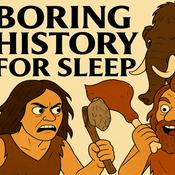

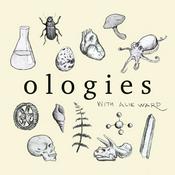
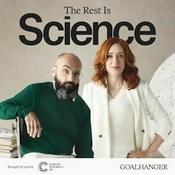
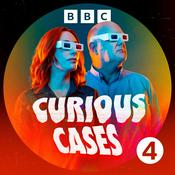
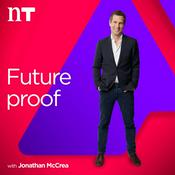


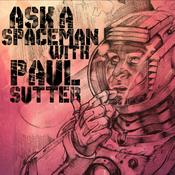
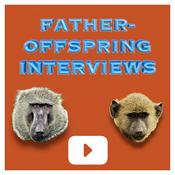
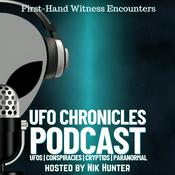


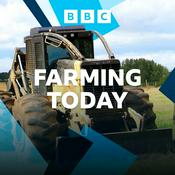
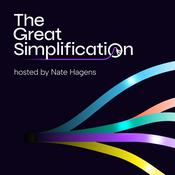

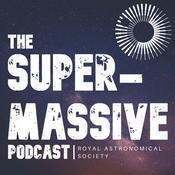

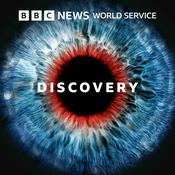
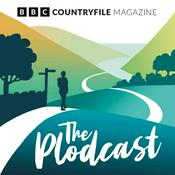
![Podcast Cosmosis [Formerly The UFO Rabbit Hole]](https://ie.radio.net/podcast-images/175/the-ufo-rabbit-hole-podcast.jpeg?version=c4cfeed14331265219e0263fd62be755644a8cf4)
